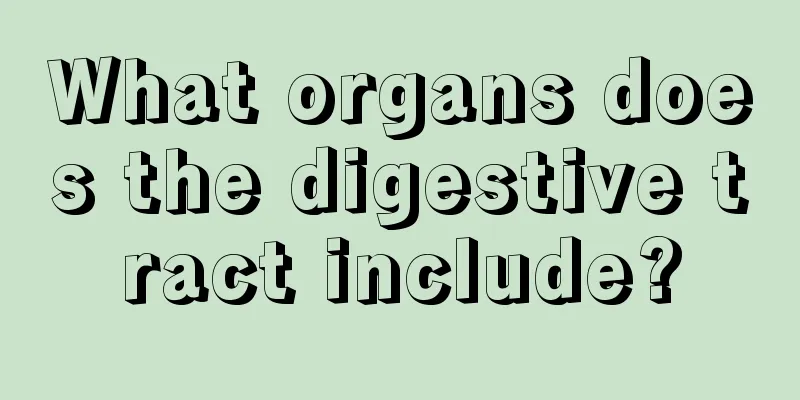What organs does the digestive tract include?

|
The health issues of the digestive tract need to be paid attention to, because some diseases caused by the digestive tract will cause harm to our health. The digestive tract includes organs such as the mouth, pharynx, esophagus, stomach and small intestine, and we should also pay attention to their functions. 1. What organs does the human digestive system include? 1. The human digestive system consists of two major parts: the digestive tract and the digestive glands. The human digestive tract includes the mouth, pharynx, esophagus, stomach, small intestine (including duodenum, jejunum, and ileum) and large intestine (including cecum, appendix, colon, and rectum). In clinical practice, the digestive tract is often divided into the upper digestive tract (the part above the duodenum) and the lower digestive tract (the part below the duodenum). 2. Digestive glands include oral glands, liver, pancreas and many small glands on the walls of the digestive tract. Their main function is to secrete digestive juices. Throughout its life activities, the human body must absorb nutrients from the outside world as a source of energy for its life activities in order to meet the needs of a series of metabolic activities such as human development, growth, reproduction, and tissue repair. The organs of the human digestive system work in coordination to physically and chemically digest food taken from the outside, absorb its nutrients, and excrete food residues from the body. It is an important system to ensure the normal metabolism of the human body. 2. How are the upper and lower digestive tracts distinguished? 1. The distinction between the upper and lower digestive tracts is artificial and is based on their different locations on the ligament of Treitz. The digestive tract above this ligament is called the upper digestive tract, and the digestive tract below the Treitz ligament is called the lower digestive tract. 2 Ligament, also known as the suspensory ligament of the duodenum, is a bundle of muscle fiber cords that runs from the right corner of the diaphragm downward to the duodenal jejunal flexure, fixing the duodenum and jejunum to the posterior abdominal wall. The ligament of Treitz is an important landmark for identifying the starting point of the jejunum. |
<<: What to do if the veins in the lower extremities are dilated
>>: Does UV radiation cause skin cancer?
Recommend
How much sleep is normal for a 27-month-old baby?
A 27-month-old baby is a little over two years ol...
What are the recipes to improve immunity
In different seasons, especially in winter, our b...
The difference between earlobes turned outward and turned toward the mouth
The contour of the ear has a great influence on a...
What is the reason for high dimer level
In order to ensure normal blood circulation in th...
What are the effects of Longhu Rendan
Longhu Ren Dan, whose main ingredients are Pohe N...
My muscles hurt after exercise, what should I do
In order to have a healthy body, people nowadays ...
The dangers of shaving armpit hair
Every adult has armpit hair. Some people have thi...
Wash your face with hot water first and then with cold water
Washing your face in daily life also requires cer...
To prevent liver cancer, remember the four things not to eat. You need to know these things about liver cancer
In our daily life, ginger occupies a large propor...
The effects and functions of mulberry leaf foot bath
Mulberry leaves are the leaves of mulberry trees....
How long can you live with conservative treatment of early lung cancer?
How long can you live with conservative treatment...
What are the clinical diagnostic methods for colon cancer?
Early symptoms of colon cancer are usually mild o...
How to treat oral anaerobic infection
Many friends have tried various methods to solve ...
How often should I have a cystoscopy after bladder cancer surgery?
Cystoscopy is recommended for follow-up after bla...
What are the occupational hazards?
Certain occupations may cause certain harm to hum...









